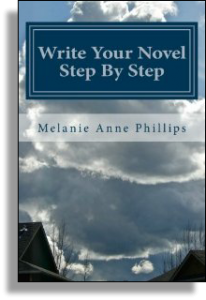Category Archives: Archetypes
Introduction to Archetypes
Archetypes are not inventions, but representations of elemental human qualities. In fact each embodies a family of qualities not unlike families of elements in the periodic table. It is as if we put all the Rare Earth elements into one character and all the Noble Gasses into another.
This means that while each archetype has many component pieces, they all work in harmony to create a character of singular identity that we recognize as a facet of ourselves, made tangible, so that we might understand that aspect of our inner narrative.
Historically, students of story have identified a multitude of characters based on personality types that they have labeled as archetypes. As useful as these are for creating characters based on relationships, or subject matter, true archetypes have no personality. Rather, they are the fundamental processes of our own hearts and minds made manifest, incarnate as functions within a narrative just as they are functions within us.
As an example, there is a Reason archetype to illustrate how our intellect approaches the problem at the core of a story. And in opposition, there is an Emotion archetype to exemplify how our passion comes to bear on the issue at hand. In totality, there are eight archetypes, each composed of eight individual elements, working in concert to illustrate the broad stroke primary colors of our psyches.
The 8 Archetypal Characters (part 3)
The 8 Character Archetypes (part 1)
Archetypes: Characters, Narratives and Mind
New Book on Archetypes and the Mind
Identifying Your Antagonist
 Write Your Novel Step by Step
Write Your Novel Step by Step
Step 48
Identifying Your Antagonist
While the protagonist attempts to accomplish the goal, the antagonist seeks to thwart that effort, either preventing the achievement or by achieving it himself.
These efforts have nothing to do with whether the antagonist is a good guy or a bad guy. For example, in most James Bond films, the Villain is the protagonist, for it is he who initiates a plan, thereby driving the plot. Structurally, James Bond himself is an antagonist, since he tries to return things to the status quo.
So, who we cheer for and our moral prerogatives are really not involved in this choice.
Referring to your cast of characters, your plot synopsis and the refinement of your protagonist you wrote in the last step, pick one of your existing characters as your antagonist and describe how he, she, or it is focused on preventing the protagonist from achieving the story goal.
In the off chance that none of your characters can easily fulfill the role of antagonist, return to the character development steps and create a new character specifically for this task.
Dramatica Trivia 3: The Contagonist Archetype
“Contagonist” is a name invented by Dramatica co-creator, Chris Huntley, to describe an archetype we hadn’t seen identified in our writing classes at USC. Learn how the notion and the name came about:
When creating the Dramatica theory of story, we began with characters – archetypes to be specific. We jotted down all the familiar ones – Protagonist, Antagonist, Reason, Emotion, Sidekick, Skeptic and Guardian. But we had a problem…
First of all they all paired up except the Guardian: Protagonist/Antagonist, Reason/Emotion, Sidekick/Skeptic (faithful supporter / doubting opposer). But the Guardian (essentially a helper/protector who is also the voice of conscience) just hung out there alone.
We suspected that stories had symmetry (though we didn’t know for sure and none of our instructors had ever said anything about that). But, we really didn’t know what this character should be, or what to call it.
But, we were initially deriving our archetypes from the original Star Wars movie (episode IV) and saw that Protagonist/Antagonist were Luke/Darth (or so we initially thought). Reason/Emotion were Leia/Chewbacca, Sidekick/Skeptic were the Droids/Han Solo and the Guardian was Obi Wan.
But then, if Darth was the antagonist, what role did the empire under the command of the Gran Mof Tarkin play? After giving it much thought, we realized that while Darth comes off, especially in the opening scene, as the quintessential melodramatic villain, he is quickly relegated to the role of henchman for the Empire.
So, at first, we thought that the last archetype was Henchman. But after more thought, we realized that a Henchman was more like a Sidekick to a Villain. But after even more thought we determined that there was only one Sidekick, but he might be associated with either the Hero or the Villain. For example, Renfield (Dracula’s assistant) is actually a Sidekick (a faithful supporter) even though he works for the bad guy. And so, we concluded that a henchman was just a Sidekick in wolf’s clothing.
But then we realized that Darth wasn’t just a pain in the neck to our heroes, but he was also a thorn in the side of Tarkin and the Empire. Darth chokes one of the other commanders and he is the one who comes up with the plan to let the Millennium Falcon escape with a homing beacon, which leads to the demise of the Death Star (“I’m taking an awful chance, Vader,” says Tarkin. “This had better work,” indicating it is Darth’s idea.)
So, if Darth screws up both sides, we realized he was similar to the archetype of the Trickster. But, he also represented the dark side of the force – the temptation of the dark side.
And then we had it. Darth was actually the opposite of Obi Wan. Rather than functioning as Obi Wan’s help and conscience, Darth represented hinder and temptation – the exat opposites. So Obi Wan /Darth represented a pair of archetypes, completing the symmetry of that part of story structure.
But – what to call that character? He wasn’t really a trickster, but more like a monkey wrench in the plans of both sides. And, he was also the tempter. So, Chris considered that this new archetype was against both the Protagonist and the Antagonist, and cleverly named him the Contagonist. Con (against) Protagonist/Antagonist: Contagonist.
Since then (some 22 years ago as of this writing), I’ve seen the word creep into a number of literary discussions on the Internet that don’t mention Dramatica at all. So, I suppose that’s a good indicator it is becoming part of the overall language of story.
Now, if only my spell checker would recognize it!
Melanie Anne Phillips
Co-creator, Dramatica
The Reason and Emotion Archetypes
The Reason Archetypal Character is calm, collected, and cool, perhaps even cold. It makes decisions and takes action wholly on the basis of logic. (Remember, we say wholly because we are describing an Archetypal Character. As we shall see later, Complex Characters are much more diverse and dimensional.)
The Reason character is the organized, logical type. The Emotion character who is frenetic, disorganized, and driven by feelings.
It is important to note that as in real life, Reason is not inherently better than Emotion, nor does Emotion have the edge on Reason. They just have different areas of strength and weakness which may make one more appropriate than the other in a given context.
Functionally, the Emotion Character has its heart on its sleeve; it is quick to anger, but also quick to empathize. Because it is frenetic and disorganized, however, most of its energy is uncontrolled and gets wasted by lashing out in so many directions that it ends up running in circles and getting nowhere. In contrast, the Reason Character seems to lack “humanity” and has apparently no ability to think from the heart. As a result, the Reason Character often fails to find support for its well-laid plans and ends up wasting its effort because it has unknowingly violated the personal concerns of others.
In terms of the Story Mind, Reason and Emotion describe the conflict between our purely practical conclusions and considerations of our human side. Throughout a story, the Reason and Emotion Archetypal Characters will conflict over the proper course of action and decision, illustrating the Story Mind’s deliberation between intellect and heart.
Sidekick & Skeptic Archetypes
The Sidekick and the Skeptic represent the conflict between confidence and doubt in the Story Mind. The Sidekick is the faithful supporter. Usually, a Sidekick is attached to the Protagonist. Sometimes, however, they may be supporters of the Antagonist such as Renfield to Dracula.
This gives a good clue to the way Dramatica sees Objective Characters: The purpose of the Sidekick is to show faithful support. That does not determine who or what it supports, but just that it must loyally support someone or something. Other dynamics of a story will determine who the Sidekick needs to be attached to in order to make the story’s argument, but from the standpoint of just describing the Archetypal Characters by themselves, the Sidekick faithfully supports.
The Sidekick is balanced by the Skeptic. Where the Sidekick has faith, the Skeptic disbelieves; where the Sidekick supports, the Skeptic opposes. The nature of the Skeptic is nicely described in the line of a song… “Whatever it is, I’m against it.” In the Story Mind, it is the function of the Skeptic to note the indicators that portend failure. In contrast, the Sidekick notes the indicators that point to success. The interactions between Sidekick and Skeptic describe the Story Mind’s consideration of the likelihood of success.




